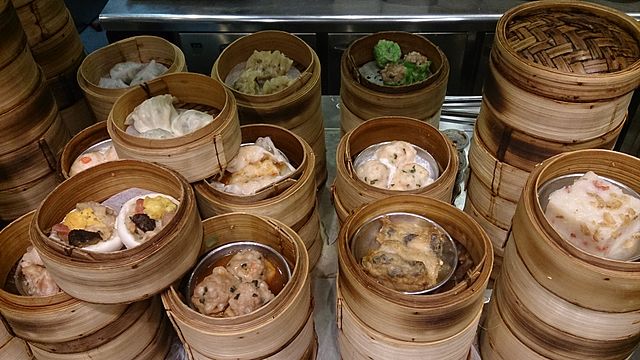Dim sum is a large range of small Chinese dishes that are traditionally enjoyed in restaurants for brunch. Most modern dim sum dishes are commonly associated with Cantonese cuisine, although dim sum dishes also exist in other Chinese cuisines. In the tenth century, when the city of Canton (Guangzhou) began to experience an increase in commercial travel, many frequented teahouses for small-portion meals with tea called "yum cha" (brunch). "Yum cha" includes two related concepts. The first is "jat zung loeng gin", which translates literally as "one cup, two pieces". This refers to the custom of serving teahouse customers two delicately made food items, savory or sweet, to complement their tea. The second is dim sum, which translates literally to "touch the heart", the term used to designate the small food items that accompanied the tea.
Dim sum
Image: Ha Gow (Cantonese Shrimp Dumplings)
Image: Chaozhoufenguo
Image: Food (27942342621)
Cantonese or Guangdong cuisine, also known as Yue cuisine, is the cuisine of Guangdong province of China, particularly the provincial capital Guangzhou, and the surrounding regions in the Pearl River Delta including Hong Kong and Macau. Strictly speaking, Cantonese cuisine is the cuisine of Guangzhou or of Cantonese speakers, but it often includes the cooking styles of all the speakers of Yue Chinese languages in Guangdong.
Chefs cook with a wok
Char siu is often marinated with plum sauce and honey for sweet flavour
Oysters steamed in two ways: with ginger and garlic, and in black bean sauce
Image: Sliced century eggs with smashed chili at Guanshi Wing Bar, Xinjiekou (20220723132726)








